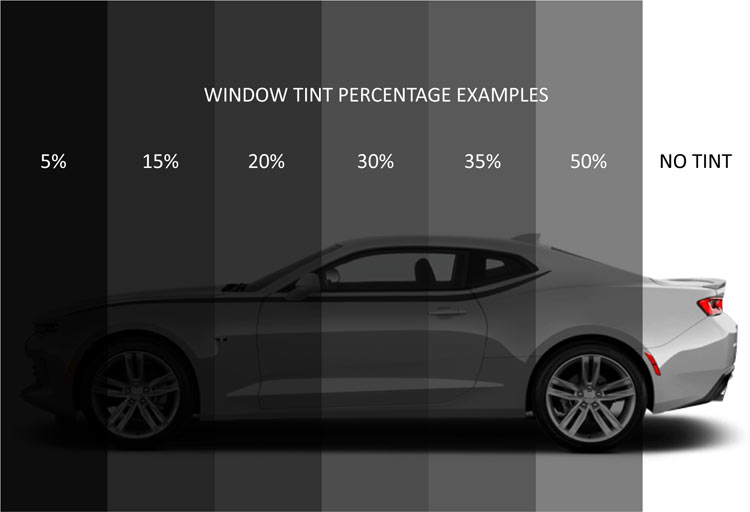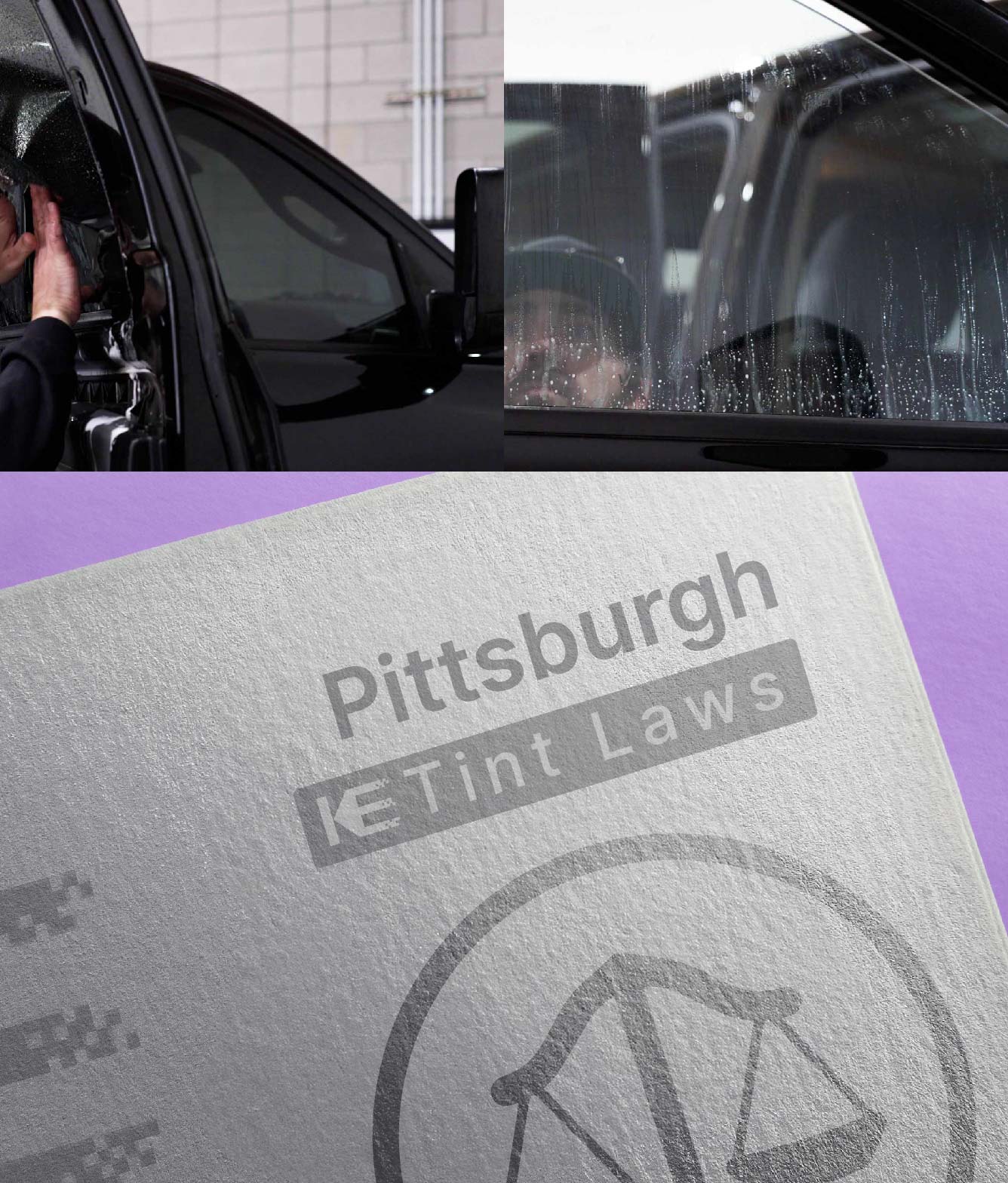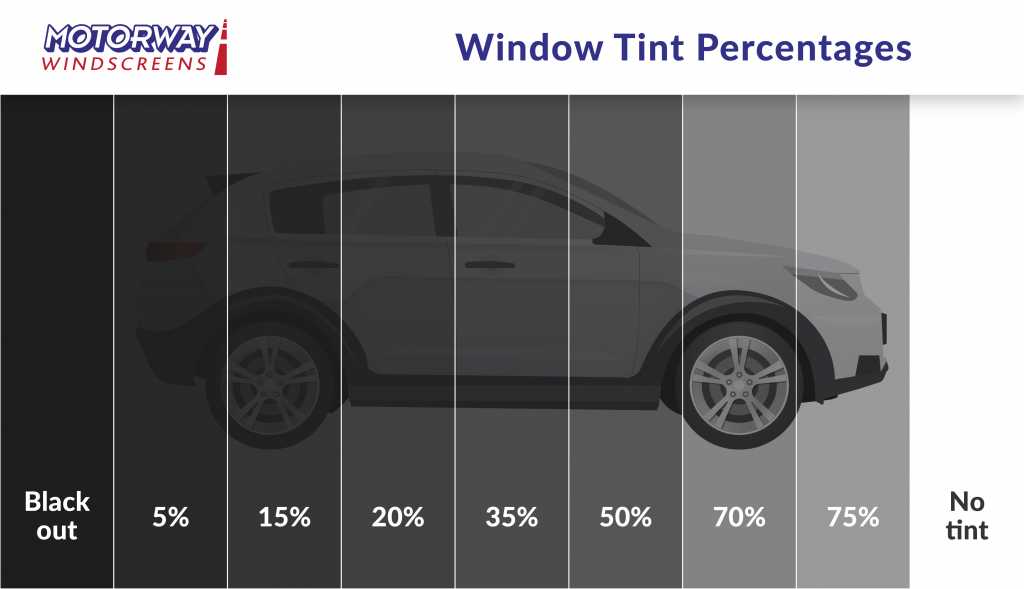A Comprehensive Guide to Comprehending Automobile Home Window Tint and Its Benefits
Auto home window tinting offers more than simply a visual objective for vehicles. It offers various types, each with unique attributes and advantages. Recognizing these alternatives, together with lawful guidelines and maintenance ideas, is crucial for any kind of automobile proprietor. The benefits might greatly improve driving convenience and lorry longevity. As one explores the nuances of home window tinting, the question arises: what type of color is finest suited for individual demands?
Recognizing Car Window Color: What It Is and Exactly how It Functions
Vehicle window tint serves as a protective barrier that boosts lorry visual appeals while supplying functional advantages. This thin movie is applied to the interior surface of auto home windows, minimizing glare and blocking harmful ultraviolet (UV) rays from the sunlight. By filtering sunlight, auto home window color assists to control the interior temperature level of the vehicle, resulting in increased comfort for guests and minimized dependence on air conditioning.Additionally, it protects the lorry's interior from fading, maintaining both upholstery and control panel products. The tint can additionally enhance personal privacy, making it harder for outsiders to see inside the vehicle. Additionally, certain kinds of window color can boost security; in case of a mishap, the film aids hold shattered glass together, reducing the risk of injury from flying fragments. Overall, auto window tint offers both visual and practical purposes, making it a prominent choice among car proprietors.
Sorts Of Home Window Color: A Summary of Options
When taking into consideration home window color options, a number of types are available, each with unique attributes. Colored, metalized, and ceramic window tints supply differing degrees of warmth rejection, UV protection, and aesthetic allure. Understanding these differences can aid automobile proprietors make educated selections based upon their choices and demands.
Dyed Window Color
Colored window tint represents a prominent option among auto proprietors looking for a effective and budget friendly way to enhance their automobile's aesthetics and personal privacy. This kind of tint is developed by placing a layer of color in between an adhesive layer and a safety finish, resulting in a dark look that lowers glow and enhances visual convenience. While dyed window tint effectively obstructs harmful UV rays, it may not supply the same degree of warm rejection as various other tint kinds. Additionally, its shade can discolor gradually, potentially lessening its efficiency. In spite of these drawbacks, colored home window tint stays popular for its cost-effectiveness and capability to provide a smooth, elegant aim to different lorry designs.
Metalized Home Window Color
Metalized window tint uses a balance of style and performance, making it a popular selection among automobile owners. This kind of tint includes metallic particles within the film, boosting both aesthetic allure and warm denial. The reflective quality of metalized color aids to lower glare and boost personal privacy, while additionally providing UV protection, which safeguards the automobile's interior. Furthermore, metalized home window color can reinforce window strength, potentially stopping smashing throughout crashes. However, it is very important to keep in mind that the metal elements can conflict with digital signals, such as GPS and cellular phone function. On the whole, metalized window tint gives a reliable remedy for those looking for a mix of appearance, durability, and sunlight defense for their automobiles.
Ceramic Window Tint
Ceramic window color represents an advanced option in the spectrum of automotive window films, using unique advantages over traditional tints. Unlike dyed or metalized movies, ceramic tints utilize innovative ceramic bits, which effectively turn down warmth and UV rays without endangering visibility. This technology assures that automobiles stay cooler, decreasing dependence on air conditioning and boosting fuel efficiency. Additionally, ceramic home window tints are much less likely to conflict with electronic devices, such as general practitioner or mobile signals, making them a functional choice for contemporary automobiles. Their resilience and scrape resistance contribute to a much longer life expectancy contrasted to various other types of tints. In general, ceramic home window tint gives exceptional efficiency, comfort, and protection, making it a preferred alternative for critical lorry owners.
Advantages of Auto Window Color: Beyond Appearances
While numerous individuals associate auto window color with boosted design, its advantages extend much beyond mere visual appeals. One considerable advantage is warm decrease; home window color can block approximately 99% of hazardous UV rays, shielding and keeping the interior cooler upholstery from fading. This not just enhances comfort during hot weather condition however likewise minimizes dependence on a/c, bring about boosted gas efficiency.In addition, car window color supplies an added layer of personal privacy and protection. Colored home windows make it hard for outsiders to see inside the vehicle, which can deter burglary and safeguard valuables. Furthermore, numerous tints strengthen the glass, minimizing the possibility of shattering in case of a crash, therefore boosting safety.In enhancement to these useful advantages, auto window tint can additionally add to glare decrease, enhancing exposure for chauffeurs and passengers alike. This multifaceted strategy to convenience and safety makes home window color a beneficial financial investment for car owners.
Legal Considerations: Tinting Rules by State
Before dedicating to vehicle window color, automobile owners should browse a complicated landscape of tinting regulations that differ by state. Each state has certain laws controling the acceptable levels of tint darkness and reflectivity for various windows, including windshields, front side windows, and back windows. These laws typically include visible light transmission (VLT) percentages, which dictate just how much light can travel through the colored glass.Some states allow darker colors on back home windows while restricting front side and windshield colors for security reasons. Furthermore, certain states might require a certificate from the manufacturer to validate compliance with tinting legislations. Breaking these laws can result in penalties, necessary the original source elimination of the color, or both. Consequently, it is necessary for vehicle proprietors to research their state's regulations thoroughly to ensure legal conformity before setting up window tint. This persistance can save money and time in the lengthy run.
Selecting the Right Color: Variables to Think about
When picking the appropriate window tint for a vehicle, numerous crucial variables enter play. Color darkness degrees, UV defense rankings, and conformity with legal policies are necessary factors to consider to guarantee both aesthetic appeals and capability - Car Glass Tinting. Reviewing these facets will aid individuals make an educated choice that meets their demands and follows local regulations
Color Darkness Degrees
Choosing the appropriate color darkness degree is important for achieving the wanted equilibrium in between visual appeals and performance in auto home window tinting. Various states have differing legal policies regarding tint darkness, which can influence the selection. Usually, colors are determined in percentages, with lower percentages showing darker tones. Darker colors use boosted personal privacy and a sleek appearance but can decrease exposure, particularly during the night. Alternatively, lighter colors keep a more open feeling, guaranteeing ample visibility while still giving some warm and glare decrease. Individuals must consider their driving practices, local legislations, and personal choices when deciding. Ultimately, the ideal color darkness level boosts the lorry's look while making certain safety and compliance with lawful standards.
UV Defense Ranking
Color darkness levels play a substantial function in the total effectiveness of vehicle window tinting, however another vital variable to evaluate is the UV defense rating of the selected color. This rating suggests the percent of dangerous ultraviolet rays that the color can block. High-grade tints typically give 99% or even more UV protection, securing guests and the automobile's interior from sunlight damages. Extended direct exposure to UV rays can lead to skin issues and fading of furniture, making a high UV defense rating necessary for wellness and longevity. When choosing window color, consumers must prioritize this score along with darkness degrees to assure optimum convenience and safety and security while driving. Comprehending these variables help in making an informed decision when purchasing vehicle window tinting.
Legal Laws Compliance
Comprehending local lawful regulations is vital for any person considering auto window tinting. Each state or region has specific regulations controling the permitted degrees of color darkness and reflectivity for various windows. These policies commonly define the visible light transmission percent, figuring out just how much light can go through the colored glass. Non-compliance can lead to fines, obligatory removal of the color, or concerns during car assessments. In addition, some locations may have restrictions on using particular tinting products, requiring customers to choose items that satisfy safety standards. It is vital for lorry proprietors to investigate their neighborhood regulations extensively before picking window color to ensure compliance and stay clear of prospective lawful issues.
Setup Refine: DIY vs. Specialist Solutions
How does one make a decision between a DIY installment and hiring professional solutions for auto home window tinting? The option usually rests on spending plan, experience, and desired outcomes. A do it yourself method can be cost-effective, allowing individuals to reduce labor expenses. Nonetheless, it requires a specific level of ability and understanding about the tinting procedure. Those who are careful and person might discover success with DIY packages readily available in the market.Conversely, professional services use experience and top quality products, guaranteeing moved here a flawless surface. Experts usually ensure their job, supplying assurance versus possible problems such as gurgling or peeling. Furthermore, they know with neighborhood legislations concerning tinting, which can be intricate for the typical vehicle owner.Ultimately, the decision reflects a balance between cost, personal capability, and the expected quality of the tinting work. Each choice has its advantages, and the most effective option depends on individual circumstances and preferences.
Upkeep Tips: Keeping Your Tint in Leading Problem
Preserving the look and capability of window tint calls for normal focus and care, specifically in varying climate condition. To preserve the color, it is vital to prevent using unpleasant cleaning materials, which can scratch or harm the movie. Car Glass Tinting. Instead, soft microfiber fabrics and mild, ammonia-free cleaners should be made use of for cleansing the tinted surfaces.Furthermore, it is a good idea to wait a minimum of thirty days after setup prior to cleansing the home windows to allow the tint to fully adhere. Parking in shaded areas or using sunshades can help in reducing the fading impacts of UV rays and lengthen the color's life expectancy. Regular assessments for bubbles, peeling off, or staining are recommended, as very early detection can promote fixings. Avoiding severe temperature changes, such as pressing warm home windows in cold weather condition, will certainly help preserve the color's stability and appearance over time.
Frequently Asked Inquiries

For How Long Does Home Window Color Generally Last on a Car?
Window tint usually lasts between five to ten years, depending on elements such as high quality, application, and ecological problems. Normal upkeep and proper treatment can expand its life expectancy, making certain perfect performance and appearance with time.
Can Window Tinting Damages My Vehicle's Original Glass?
Window tinting, when used appropriately, does not harm a cars and truck's initial glass. Inappropriate setup or low-quality products may lead to concerns like bubbling or peeling off, possibly impacting the glass's integrity over time.
Is Home Window Tinting Safe for All Types of Autos?

Will Home Window Tinting Void My Automobile Guarantee?
The concern of whether home window tinting gaps an automobile service warranty often depends upon the manufacturer's plans. Normally, if the tint does not harm the car, warranties normally stay undamaged. However, speaking with the dealership is recommended.

Can I Remove Window Color Myself if Needed?
Getting rid of window tint oneself is feasible, however it calls for cautious focus to prevent damaging the glass. Individuals should use proper devices and techniques to guarantee an effective removal without leaving glue residue or scrapes behind. While dyed window color efficiently blocks hazardous UV rays, it might YOURURL.com not provide the very same degree of warmth denial as other color types. Ceramic home window color represents a sophisticated choice in the range of automobile home window movies, providing unique benefits over conventional colors. Before dedicating to automobile home window tint, automobile proprietors have to navigate a complex landscape of tinting policies that differ by state. These policies typically consist of noticeable light transmission (VLT) percents, which dictate how much light can pass through the tinted glass.Some states allow darker colors on rear windows while restricting front side and windshield colors for safety and security factors. Tint darkness levels play a considerable function in the general performance of car home window tinting, yet another important element to examine is the UV security score of the selected color.